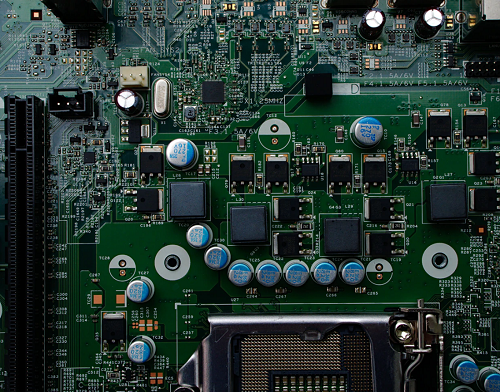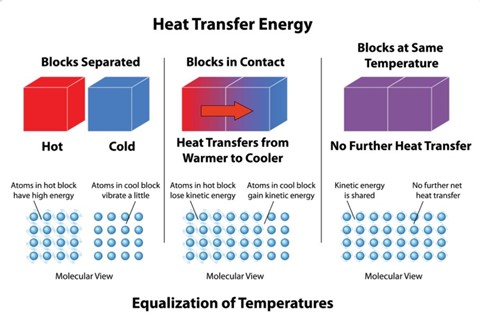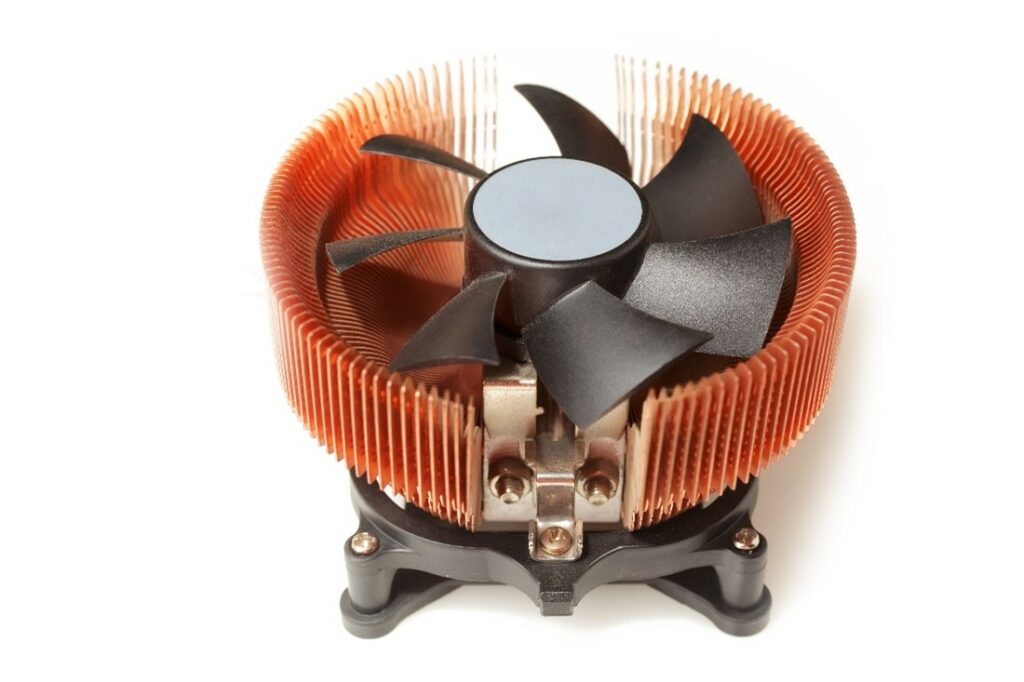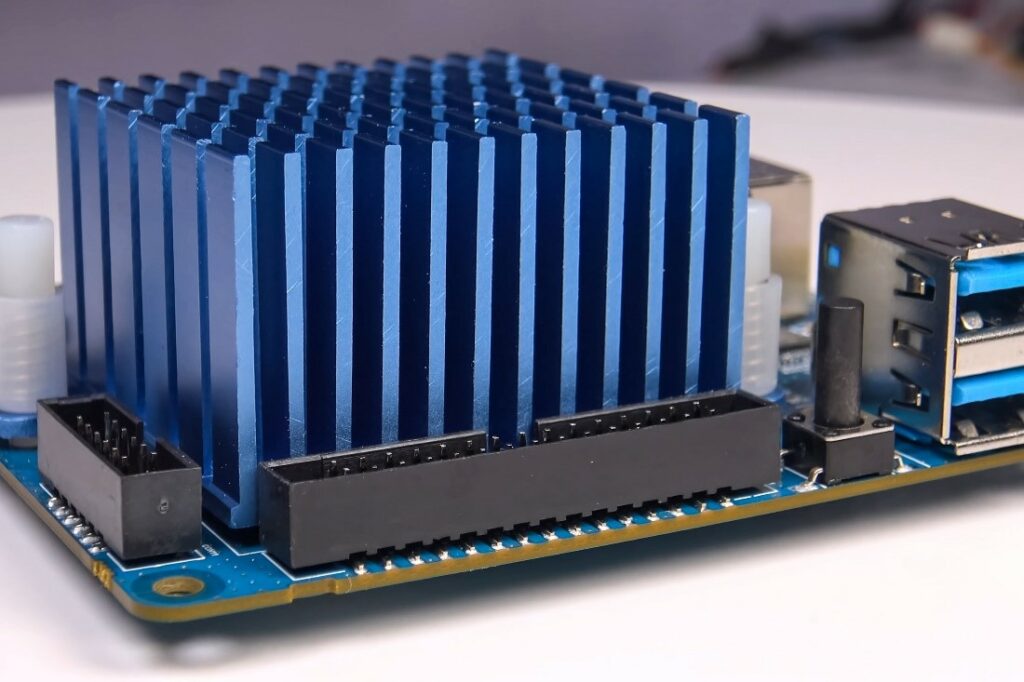
October 18, 2021
The influence of heat transfer on maintaining a stable thermal environment and ensuring proper functioning of an electronic device.
Over the past decade, smartphone, computer, and microelectronic technology have experienced revolutionary change and have quickly become one of the most dominating industries in the entire world. Consumer needs are fueling the rapid advancements in both the design and manufacturing of devices pushing the electronic industry to respond to this demand with innovation by offering products that are more powerful and faster than conventional “outdated” equipment. This desire expressed by society for newer and faster devices, combined with the emerging trend in the electronics industry to decrease the size of the device while still increasing its power has influenced some rapid technological advancements in the engineering and design of portable electronics. Coupled with the refinement of the size and power of handheld electronics is an impressive advancement involving the thermal management of these devices. Thermal management encompasses the technology of the generation, control, and dissipation of heat produced by an electronic device. Without adequate thermal management, the power, performance, and reliability of an electronic could suffer. Heat is an inevitable by-product of every electronic device and because it has the potential to be extremely disadvantageous to the reliability of that device it has become one of the most important components for designers to consider during the production of cutting-edge technology.

Figure 1: Internal view of the inside of a PC computer
Technology products must be reliable. Reliability can be determined by looking at the probability that a device will perform its required functions under stated conditions for a specific period of time. Product reliability is seen by many in the industry as the single most important factor for determining the quality and superiority of a device. In order to ensure that an electronic device is reliable, it must have adequate thermal management. Most thermal management in a small device is regulated through a heat sink. A heat sink is a device designed to enhance heat dissipation from a hot surface, that is caused by the heat-generating component of an electronic device, into a cooler environment known as a fluid medium that can include the surrounding (ambient) air, water, refrigerants, or oil. Heat sinks that use water as their fluid medium are more commonly referred to as a cold plate. Heat sinks are designed with a central idea in mind to increase the available surface area of an electronic component that is in direct contact with a coolant and allows for more heat to be easily dissipated which will, in turn, lower the devices operating temperature. In computers, heat sinks are used to cool CPUs, GPUs, some chipsets, and RAM modules normally functioning as an attachment for a chip that prevents it from overheating. Every heat sink must include a thermal conductor that transports heat away from the CPU into a fin or fan like structure that will provide a larger surface area for the heat to dissipate throughout the rest of the computer, thus cooling the heat sink and the processer. In order for this process to be effective, the design of a heat sink must incorporate a fan and requires air to flow through the system either by active or passive internal processes.
Heat sinks are generally made of metal due to their ability as a thermal conductor to carry heat away relatively quickly from the CPU to prevent overheating. A variety of metals can be used during the design of a heat sink, all of which exhibit different thermal conductivity values. The thermal conductivity of a material can be formally defined as its ability to transfer heat through it. Materials with a higher thermal conductivity will promote a faster and more efficient heat transfer, whereas materials with a lower thermal conductivity will act as insulators by restricting heat flow. Two of the most commonly used metals for the design of heat sinks are aluminum and copper, both of which display extremely high thermal conductivity values.

Figure 2: Diagram depicting the equalization of temperatures via conduction processes and molecular movement
Aluminum is often selected by manufacturers as their metal of choice because it has a high thermal conductivity value of roughly 235 W/(m/K). Another factor that impacts its popularity is that it is a relatively inexpensive metal to produce, and it is extremely lightweight which will limit the amount of stress being placed on the motherboard of a computer. Copper has been deemed by many as the “best” metal to use for designing extremely effective heat sinks as it has an astonishingly high thermal conductivity of roughly 400 W/(m/K), the highest of all the natural metals. Although copper is extremely effective in terms of transferring heat away from a CPU, it is significantly more expensive and heavier than aluminum which makes it a less popular choice among manufacturers.
More modern and efficient heat sink designs are beginning to experiment with a mixture of both aluminum and copper for the construction of a heat plate as an attempt to capture the lightweight properties of aluminum while still harnessing the high thermal power of copper. These designs will bond the elements together in a mixture consisting mainly of aluminum (due to its lower cost), surrounded by a copper plate (for its high thermal conductivity). In theory, these designs offer a dynamic solution to the potential problems posed by each of the metals, however, if the copper does not bond tightly enough to the aluminum (which is often the case for inexpensive heat sinks), the incorporation of a copper plate can actually do more harm to the heat sink than good.
Another material that is emerging on the market is known as CarbAl which is produced by the firm Applied Nanotech. This isotropic material has a composition of roughly 20% aluminum and an 80% mixture of two unique carbon derived materials. This manufactured material has an impressive thermal conductivity of 425 W/(m/K), higher than both aluminum and copper. CarbAl has the potential to dominate the heat sink industry as it exhibits a high thermal conductivity value similar to that of copper while still maintaining a low mass and weight similar to that of aluminum. Natural graphite composite materials have also been proposed as a copper/aluminum alternative; however, they have a lower thermal conductivity than copper at only 370W/(m/K). The main benefit of graphite materials is that they are extremely lightweight (70% lighter than aluminum). One rule of thumb that is expressed among electronic designers in the industry is that the cheaper a heat sink is, the more it will end up costing in the long run due to the need for replacement parts and repairs. Inexpensive heat sinks often incorporate components such as sleeve bearings into their design which are known to break down quickly and cause problems with their lubrication. Heat sinks that instead use ball bearings may be initially more expensive, however, they will undoubtedly last longer and will cost the consumer less in the long run.

Figure 3: Copper is the most widely distributed form (pennies).
The materials used for the construction of a heat sink are a major component that ensures the success of a device, but the methods by which excess heat is removed from an electronic also play an important role in its overall reliability and functioning. In direct heat-sink contact applications, heat moves into the heat sink and away from the source via natural conduction, hence why the thermal conductivity of the material the heat sink is made of is such a crucial factor. Conduction is one of the most common methods of heat transfer and can be observed when two objects of different temperatures come into direct, physical contact with one another. At the point where these two objects meet, the faster moving molecules of the warmer object collide with the slower moving molecules of the cooler object and by doing so, will transfer heat in the form of kinetic energy. Heat will obey this rule of conduction during transfer in a heat sink by following a thermal gradient. The heat and energy will move from an area of high heat concentration that is in close proximity to the heat generating component of an electronic device, to a region with a lower heat concentration that is present in the surrounding environment.
The process of moving heat away from a source by utilizing a thermal gradient also depends heavily on the heat sinks working fluid. Generally, the working fluid is air or a non-electrical conductive fluid. The working fluid will pass across the surface area of the warm heat plate and by using thermal diffusion and convection processes, it will remove excess heat away from the heat source and expel it into the cooler surrounding environment. This process places a heavy reliance on the presence of a strong thermal gradient and requires a significant temperature difference to be present between the heat source and the environment. If this gradient is altered or removed, convection processes and subsequent heat removal will cease and the electronic device will quickly overheat leading to mechanical failure.
If there is a disruption to a thermal gradient that causes it to become too weak to promote effective heat transfer, the heat sink design has the option to incorporate some active processes involving an external input of energy to enhance heat flow. Active heat sinks use forced air generated by a fan or blower to increase fluid flow across the overheating area of a device. The fan in your PC is an example of a forced air system that utilizes active processes. This fan pushes air more rapidly across the heat sink which will increase the volume of unheated air moving across the surface thus leading to an overall increase in the thermal gradient present between the internal hot system and external cold system. Although active heat sinks require an additional input of energy, they are significantly more stable than passive heat sinks which rely solely on natural convection processes for maintaining a consistent temperature within a device. Hybrid heat sinks combine aspects of both passive and active heat sinks; however, these systems must be regulated using a control center which can lead to thermal management becoming significantly more technical. These complicated hybrid systems are extremely effective in maintaining a balanced thermal gradient. When the system is operating in a cooler environment, the control center will trigger a decrease in active processes and switch to relying solely on passive airflow for heat transfer. If the surrounding environment experiences an increase in temperature, the active cooling mechanisms will engage to increase the cooling capacity of the heat sink.

Figure 4: Heat sink cooling fan
The ideas that power the design of heat sinks are far from congruent with dozens of different configurations being continuously produced and used in a variety of applications throughout the electronics industry. Plate fin and pin-fin heat sinks are the two designs that dominate this industry due to their high effectiveness and reliability. Plate fin heat sinks are an example of a passive thermal management system that is an extremely popular choice among consumers due to its simple design and easy fabrication. This fail safe and quiet method consumes no external power and is easy to manufacture. A plate fin heat sink will extract heat using natural convection processes and redistribute the heat expelled from the heat source across the large surface area of a metal plate. Pin-fin designs provide a higher heat transfer co-efficient but this increase in power comes at the expense of a higher production cost. Pin-fin heat sinks are ideal in a changing environment that is prone to temperature shifts that can cause a change in the air and fluid flow. This design incorporates pins into the plate that extend from its base and can come in a variety of shapes and sizes including cylindrical, elliptical, or square. The goal of this design is to stack as much surface area as possible into a pre-determined volume and be able to continue to function probably in a variety of different environmental conditions.

Figure 5: Rectangular pin-finned heat sink
Although the physical design of a heat sink is the main mechanism influencing the effectiveness of a piece of electrical equipment, other variables such as the incorporation of a Phase Change Material (PCM) into the equipment can also have a major impact on the thermal processes. Heat sinks that use a PCM for thermal enhancement are the only type of heat sink that acts as a temporary “sink” for heat to be stored in. Convection heat sinks (as described previously) are technically heat exchangers as they remove heat generated by an electronic device by transferring it to a fluid, either air or a coolant. These forced air convection systems often rely on a fan for cooling the device, but fans are normally quite bulky and thus not suitable in smaller hand-held electronic devices such as a smartphone. Alternatively, a PCM heat sink is capable of absorbing the generated “waste” heat which can prove extremely beneficial when there isn’t a place to dissipate the excess heat due to the compatibility of an electronic device and its sensitivity to weight and power consumption. A PCM heat sink stores thermal energy by undergoing a phase change from a solid to a liquid in which heat is absorbed and then released once the liquid solidifies. This transition in energy between the solid and liquid phases of a material is known as the latent heat of fusion. Materials that exhibit a high latent heat of fusion are capable of storing a significant amount of heat during a phase transition while still maintaining a near constant internal temperature. Current applications of PCMs include solar thermal applications, air conditioning systems, passive heating of buildings, refrigeration, and portable electronic cooling. Some common PCM include Paraffin and non-paraffin organics as well as N-eicosane.
Paraffin and non-paraffin organics have been informally declared the “ideal” phase change material due to their unique ability to melt and freeze congruently. Congruent composition change describes a material’s ability to undergo a phase change and still maintain the same composition before and after freezing. This desirable property of these materials gives them the potential to be used for applications that require material stability throughout multiple cycles. One major drawback of paraffin organics is their low thermal conductivity of only 0.2 W/(m/K). These organics are generally alkanes or saturated hydrocarbons making them an inert phase change material.
N-eicosane is used as an alternative to, or in combination with paraffin as a phase change material to store dissipated heat from a CPU. N-eicosane displays a melting temperature of roughly 36.5°C and will remain in a solid state at ambient air temperature as long as the operating temperature of the electronic device does not exceed its melting temperature. N-eicosane is more commonly used for the thermal management of portable hand-held electronic devices compared to the more widely distributed applications of paraffin materials.
With the consumer electronics industry in Canada predicted to reach a value of 7.35 billion USD by 2025, the demand and pressure placed on the production of effective heat sinks are only going to grow larger as these devices continue to become more powerful and fine-tunned. There are a number of different variables and enhancements available to incorporate into the design of a heat sink, some of which include fan shape, fan size, incorporation of a PCM, and type of PCM. These additional thermal management components all have a significant influence on the degree to which a heat sink will function properly. Without heat sinks, smartphones, laptops, and many other electronics that play a massive role in our daily lives would cease to exist. The heavy dependence of our society on these hand-held electronics only emphasizes how important a heat sink is in our daily lives and the degree to which this keystone component of many devices will continue to become more modern and refined as technology continues to advance.
Author: Kallista Wilson | Junior Technical Writer | Thermtest
Arshad, A., Ali, H., Yan, W.-M., Hussein, A., & Ahmadlouydarab, M. (2017). An Experimental Study of Enhanced Heat Sinks for Thermal Management using N-eicosane as Phase Change Material. Applied Thermal Engineering, 132. https://doi.org/10.1016/j.applthermaleng.2017.12.066
Consumer Electronics—Canada | Statista Market Forecast. (n.d.). Statista. Retrieved March 1, 2021, from https://www.statista.com/outlook/dmo/ecommerce/electronics-media/consumer-electronics/canada
How Heat Sinks Work. (2010, August 31). HowStuffWorks. https://computer.howstuffworks.com/heat-sink.htm
Pin Fin Heat Sinks for Natural Convection and Low Airflow Applications. (n.d.). MyHeatSinks. Retrieved February 27, 2021, from https://myheatsinks.com/products/pin-fin-low-airflow/
Plate fin heat sinks. (n.d.). Hectronic. Retrieved February 27, 2021, from https://hectronic.se/plate-fin-heat-sinks/
What are Heat Sinks? How Heat Sinks Work & Popular Types. (n.d.). Arrow.Com. Retrieved February 26, 2021, from https://www.arrow.com/en/research-and-events/articles/understanding-heat-sinks-functions-types-and-more